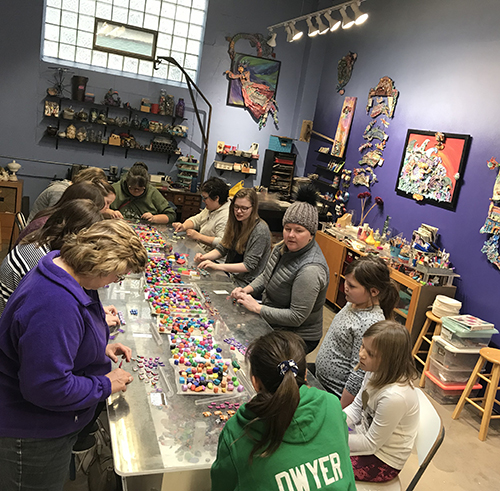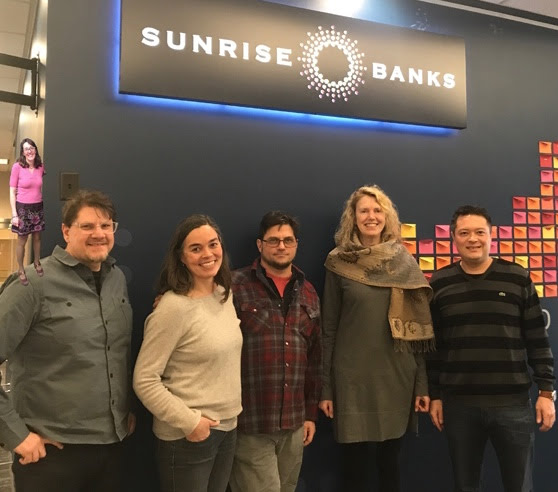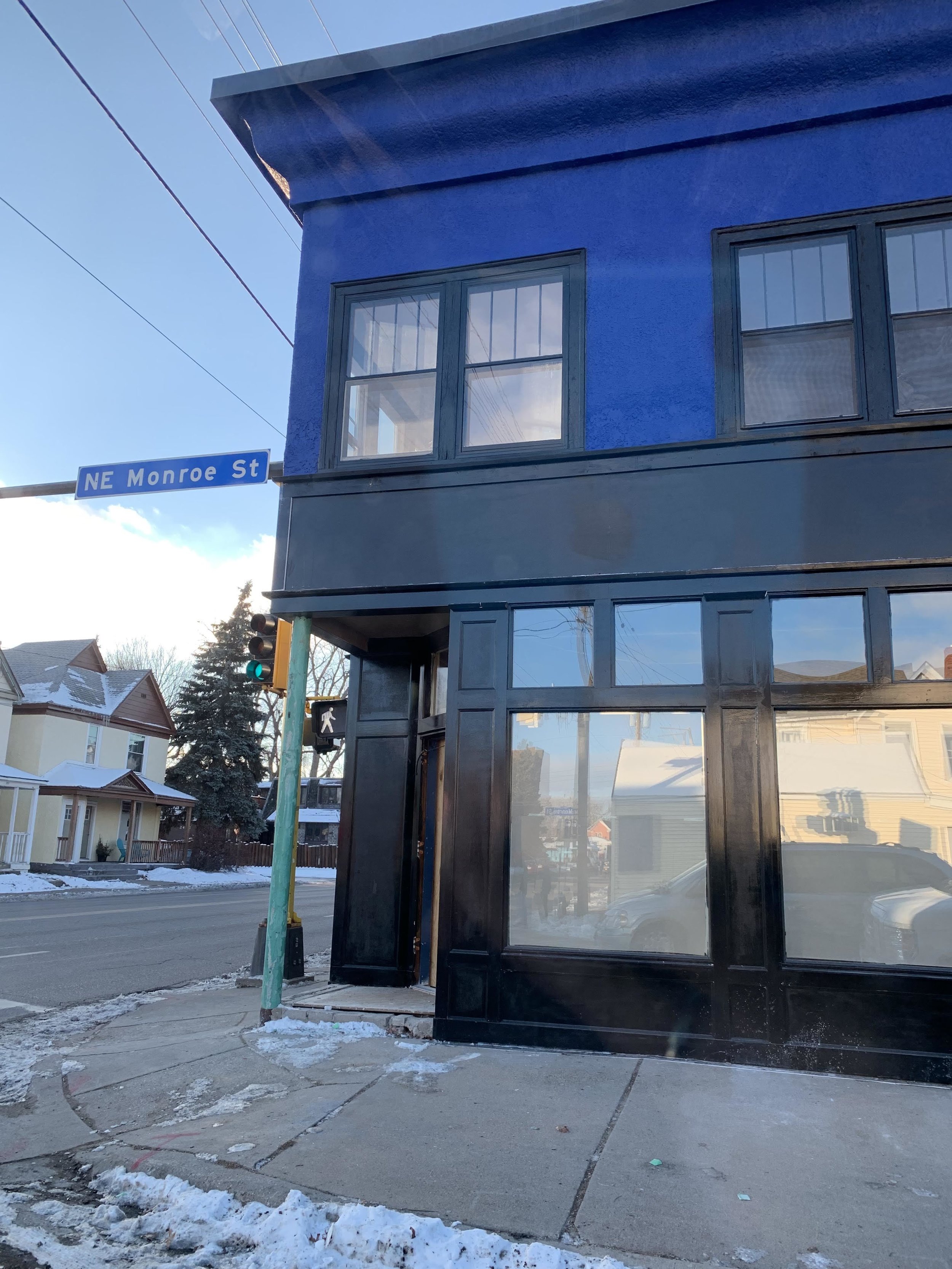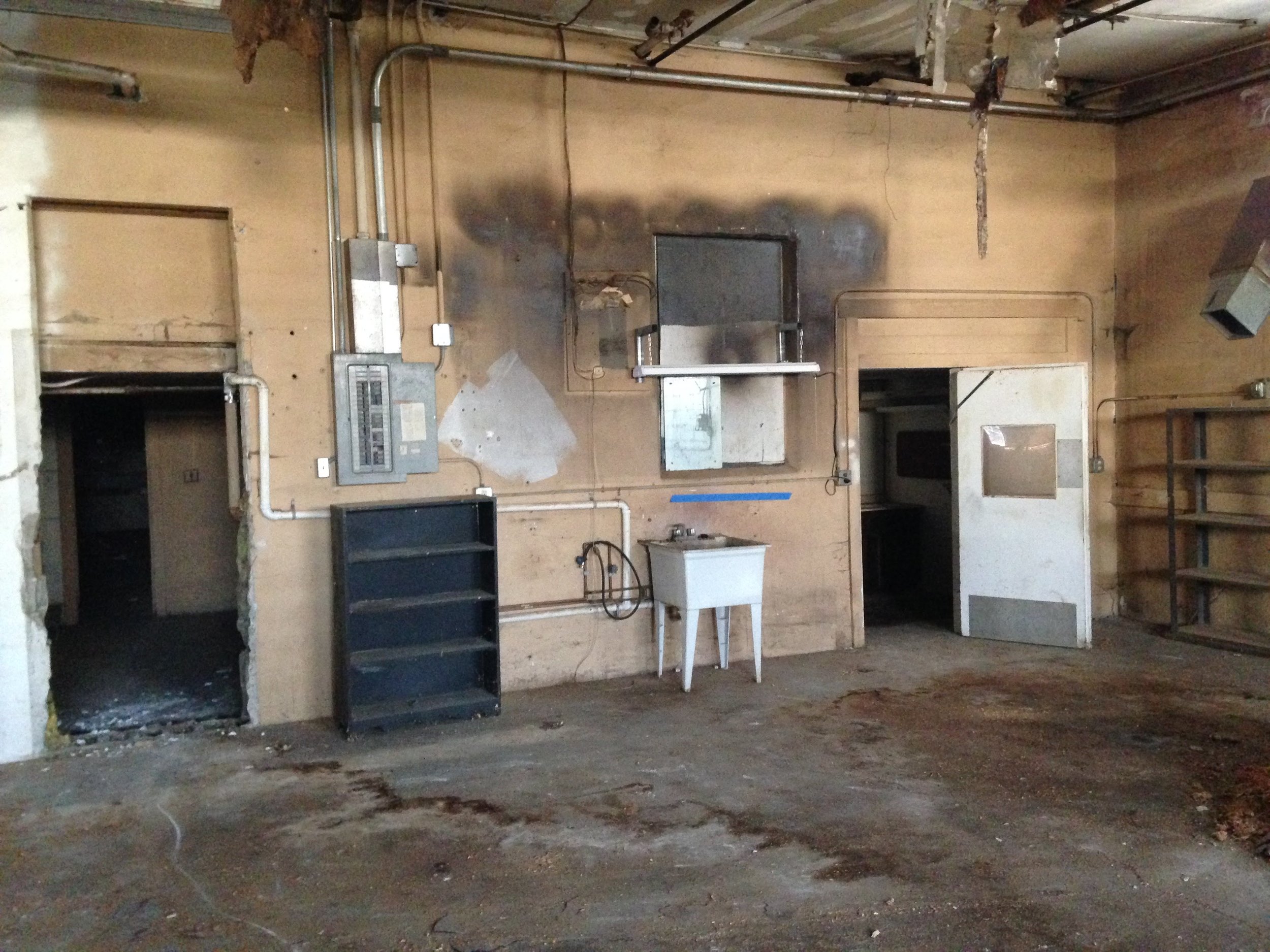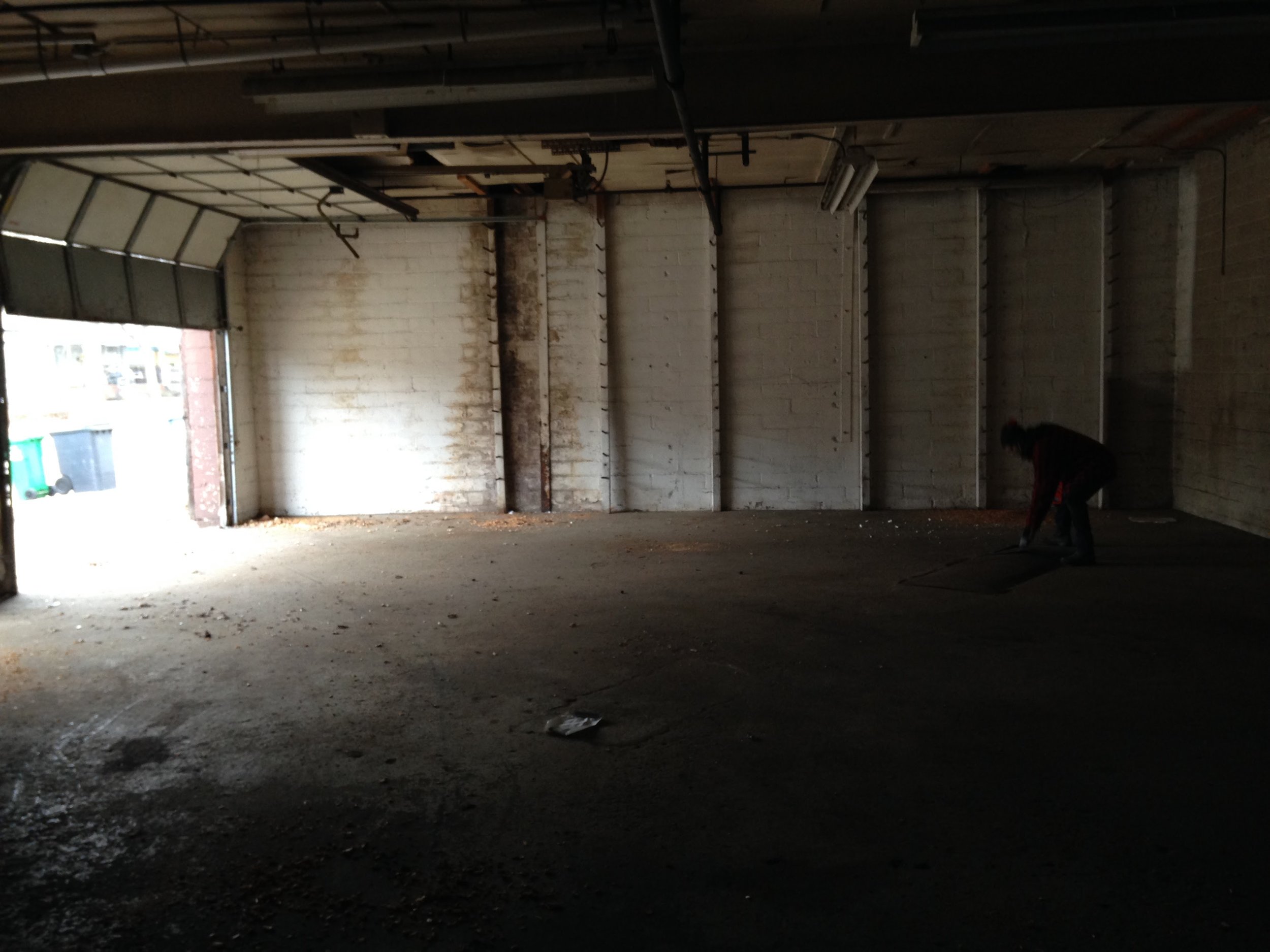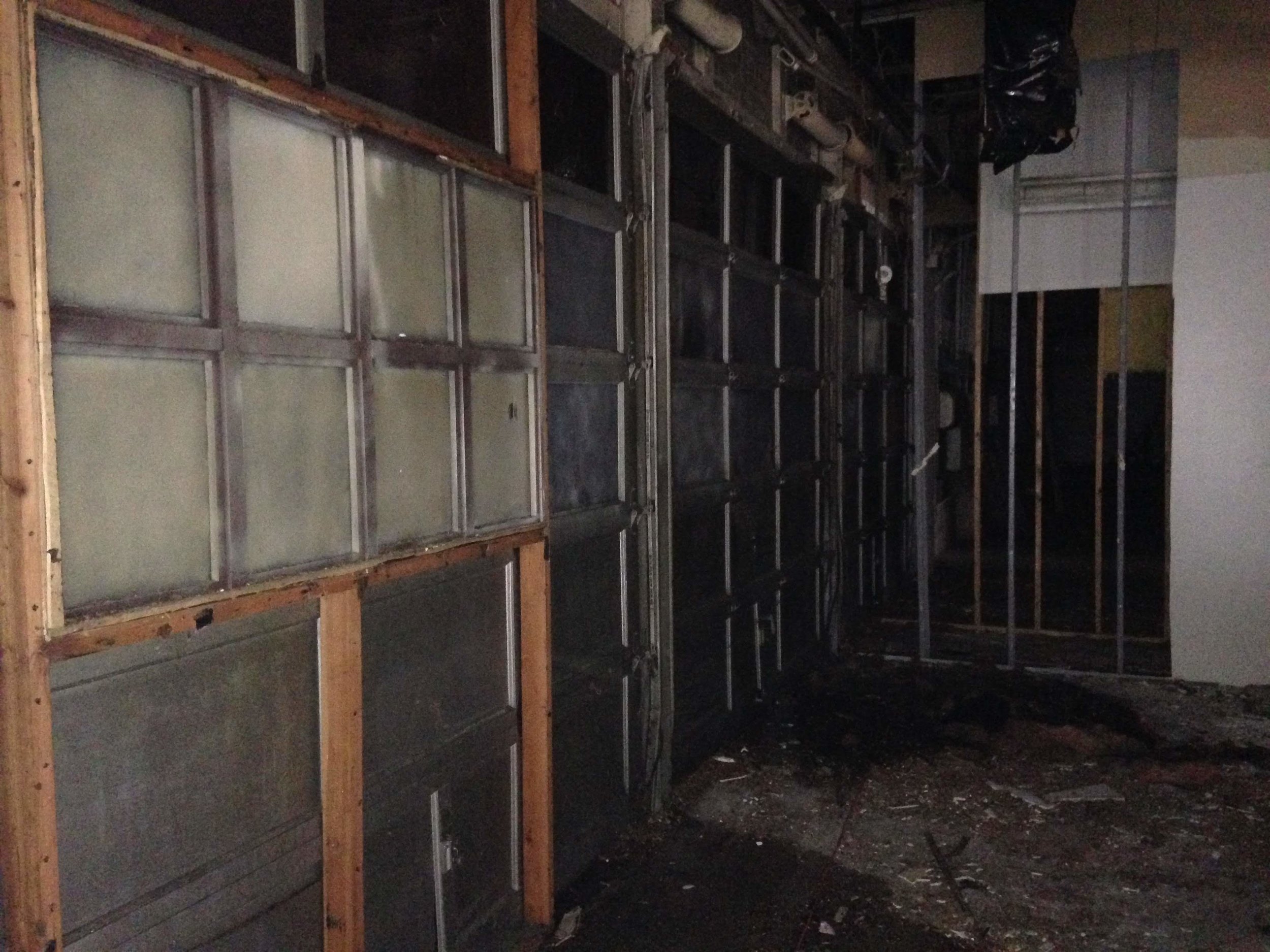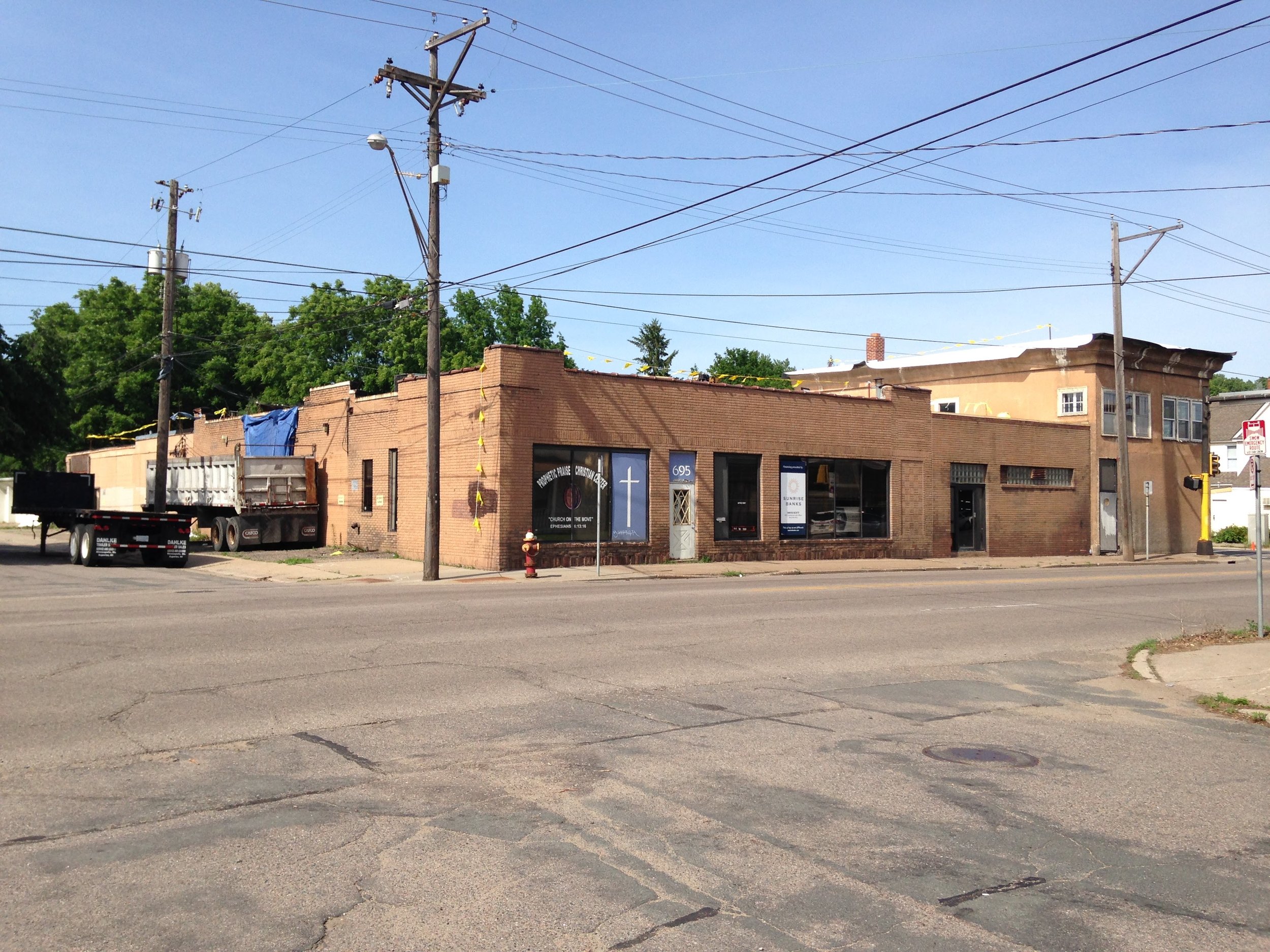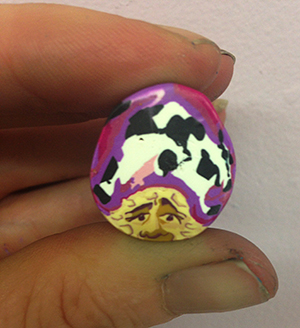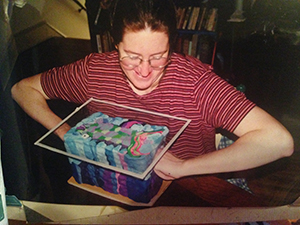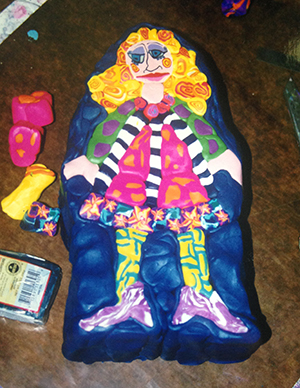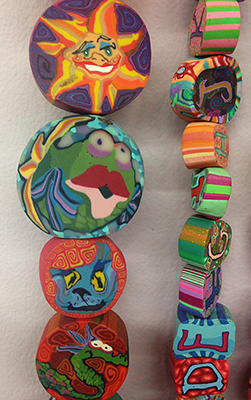One of the first classes taking place in my new studio in the Flux Arts Building
My husband Josh and I have dreamed of buying a building for as long as we can remember. We bought our first house back in 1995; that was the home of our first studio. It worked great because the house was a duplex: the rent for the other space completely covered our mortgage. When we moved our studios to our first commercial location on Central Avenue, we had to start paying rent. We soon realized that buying a building was our ultimate goal for financial stability.
That first studio/showroom on Central was the first of many buildings we tried to buy. The asking price was too high, so we looked elsewhere. At that time, in 2004, our business was too new for banks to take the risk and the spaces available weren’t very good fits. Thinking back on it, the banks were smart. We weren’t ready for the responsibility of a building on top of trying to get our business off the ground.
So we moved to the Keg House Arts Building and signed a five year lease. When those five years were almost up, we looked around again, but nothing was available. Another five-year lease came and went and we looked again. We came close to moving, but things weren’t right: wrong price, wrong space, not worth moving. So we signed on for another three years and then looked again. This time we thought we found the perfect space but there was an issue with a previous offer that the bank was waiting to be resolved. We had to make a decision, so we signed another two-year lease. We thought we would have to wait a lot longer, at this point, but then Josh saw this building only 5 blocks from our house in the Holland Neighborhood.
It was BIG and it needed A LOT of work. I’d never even noticed it before because it really was too ugly to notice. Josh was very interested. People were working on emptying it when he stopped to ask about it. It was a tax forfeit property. I thought it looked like way too much work. Josh thought it looked interesting. He researched all about tax forfeited property and it sounded really hard to get if you weren’t a contractor with A LOT of cash. But he was still interested. He kept biking by it everyday and trying to peek inside. He kept calling the city about it. I kept thinking he was crazy!
Then on a very cold day in January 2017 there was an open tour of the building. Josh went to see what he could before his toes froze. Malcom Potek of Potek Glass also happened to be there. By the end of that week we had a plan —a partnership with Malcom and his wife, Kara Van Wyk, to buy the building.
Our team on Building Buying Day. Yep, that’s me on Josh’s shoulder! (I was actually in Florida,)
I still thought this was crazy, but then we connected with Jennifer Young and John Krammer from the California Building Company and asked them to be our contractors. This made me feel much more hopeful as they knew all the ins and outs of working with the city and they knew how to rehab old buildings. Their two biggest projects, The California Building and the Casket Arts Building, proved that. So we quickly put together a proposal. At least the city had put out a request for proposals and the building would be sold for a solid asking price, not putting it out for bids. We had a chance. For once it wasn’t all about who had the most money, but who had the best ideas.
We met with the city to talk about our proposals and what do you know? They picked us! So began an entire year of getting all the paperwork and loans lined up. I felt like I was learning a new language. By now I’ve forgotten it all; let’s just say it was very challenging and much like a part time job! We had three lenders in the game: Sunrise Bank, SBA and the City of Minneapolis with a 2% loan. In February 2018 we were officially the owners of this building; construction could begin. The California Company partnered with Raven Construction. The building was gutted. For months we mostly just watched, but we did get in on the fun of stripping wallpaper and cleaning old light fixtures.
The exciting part was discovering the garage doors that were bricked in. But this discovery meant we had to change our plans. It took some major moments of decision making, but eventually our architect, Tim Gaetz, designed the spaces so they really fit and made sense with what the building was. All summer and fall last year we watched the transformation. It was so exciting to see holes being cut for windows and then paint going on the outside and then the inside. The fall felt like forever because we were so anxious to get in and start making it our space. Finally on December 23rd we moved!
When I’m in my studio I feel like I am living a dream. It think back to when I was in college and we did a visualization project about imagining your future. I remember the perfect studio I imagined back then and it was no where near as fabulous as this one! I have so much room for all my supplies and a big wall for all my art. And the space for classes is amazing. This year I have so much travel planned (as I write this I am in Florida doing art fairs) that I know that every minute I am in my new studio, I will be so grateful. We had so much help from everyone involved to make this happen!
What a journey it has been to get to this point! It also took us nearly the full two years to land on the best name for the building. But we finally decided on the Flux Arts Building. Which I think fits this building that has transformed from the ugliest building, which you would never even notice, into something so full of creativity and life.
Above are some before images- as you can see A LOT of work needed to be done!
A section of my BIG wall of art in my new studio.
